Abstract
The telecommunications industry is growing and changing at a very high pace. To keep up with this high pace and fast-changing technologies, countries need strong legislation and an efficient regulatory system to promote fair competition in industry. In this paper a review of existing telecommunications legislation and regulations in New Zealand (NZ) is conducted. The paper highlights the existing legislation in the country and discusses the organizations responsible for regulating the underlying laws. Finally, recommendations for changes to the existing legislation and regulations in NZ are provided which are based on the current and on-going demand for telecommunication services.
Introduction
Telecommunications is a rapidly growing field and is becoming an essential part of the socio-economic development of any country in the world. With the technological advances, more and more applied areas of telecommunications are gaining prominence hence developing an on-going demand for telecommunications services. To cater for this high demand for services the telecommunications industry has started to become dense with a variety of telecommunications services and service providers.
With this remarkable increase of telecommunications services and service providers, thoughtful actions need to be taken to ensure that transparent, fair, legal and affordable provision of these services is available to the public and/or end-users. In New Zealand (NZ) various government bodies as well as agencies are responsible to provide these service goals. The Ministry of Business, Innovation and Employment (MBIE) (NZ MBIE, n.d.), the Commerce Commission, NZ (NZ Commerce Commission, n.d.) and the Telecommunications Carrier Forum (TCF), NZ (NZ Telecommunications Forum, n.d.) play key roles in the legislation, regulation and provision of telecommunications services for NZ.
In this paper efforts are made to bring together the information regarding legislation and regulations of the telecommunications sector in NZ. In particular this paper attempts to address the following open questions as far as NZ telecommunications review is concerned.
- What legislation and regulation exists?
- Is there a government communications department?
- Is the major telco wholly, partially or not government owned?
- Is there an independent or government telecommunications regulator?
- Is there an independent competition regulator?
- Is there an independent consumer protection organisation?
- Is there a universal service obligation?
- How has the telecommunications market evolved over the past 40 years?
- Is the market open and competitive or what is it like?
- Is the telecommunications market self-regulating?
This paper is organised as follows. An insight into the history of the development of the legislation and regulations related to the telecommunications sector in NZ is provided. Current issues related to legislation and regulations in the telecommunications industry are discussed. The legislation and regulations affecting the telecommunications market competition are also discussed. Recommendations for changes to the current legislation and regulations are presented, and a brief conclusion ends the paper.
History of the development of legislation and regulations
In NZ all the legislation's drafting and publishing is handled by ?The NZ Parliamentary Counsel Office/Te Tari Tohutohu P?remata (PCO) NZ Legislation? (NZ Legislation, n.d.). The first ever legislation for the telecommunications sector, published by this office was in 1987 (Telecommunications (Residual Provisions) Act, 1987) which introduced telecommunications provision for residual purposes. The process of legislation of telecommunications then continues with various reprints; the latest one is a bill (Telecommunications Act, 2001) passed on property access and other matters related to telecommunications to reduce the overall compliance costs. A list of all the related NZ legislation is provided in Appendix A (NZ Legislation, n.d.).
The national telecommunications network of NZ was commenced in 1862 with the construction of the first telegraph line connecting Littleton and Christchurch (The Encyclopaedia of NZ, n.d.). The setup of the first communication cable connecting NZ?s North and South islands was in 1866 (NZ History, n.d.). In 1878 the NZ government installed the very first telephone line between Dunedin and Milton. This setup soon became very popular because of its ease of use and efficiency as compared with the existing telegraph technology. The NZ government then started working on telephone networks and exchanges. All the rights for these were kept with the government exclusively. In 1881 NZ?s first exchange was opened in Christchurch (The Encyclopaedia of NZ, n.d.) which was then followed by Auckland and other major cities.
The first radio communication in NZ was established in 1902, and the NZ government put legislation in place for the use of radio communications under the Wireless Telegraphy Act 1903 (Wireless Telegraphy Act, 1903) to protect the government investments in wired communications and also to avoid interferences. This new mode of communication was fully embraced by NZ. From 1921 to 1980s the government?s Post and Telegraph Office (P&T) was responsible for issuing licences for the use of radio communications. In 1945 the responsibilities of the P&T increased and the department became responsible for handling all the telecommunications services both internal and external to the country.
As the industry continued to grow rapidly a need for the division of NZ?s P&T functions was identified. On 1st April, 1987 the P&T was functionally divided into three businesses, all state-owned. The Department of Trade and Industry (now known as the Commerce Commission) (NZ Commerce Commission, n.d.) was then made responsible for handling regulations regarding radio spectrum management. Later in 1987 the NZ government passed a Telecommunications (Residual Provisions) Act (Telecommunications (Residual Provisions) Act, 1987) to regulate telecommunications activities in the country.
In 1989 and the early 1990s NZ started to realise the benefits of new wireless technologies for communications. The NZ government passed the Radio-Communications Act 1989 (Radiocommunications Act, 1989) to regulate the operations of communications in the country. In the same year the government passed the Broadcasting Act 1989 (Broadcasting Act, 1989) to regulate the broadcasting of various channels and avoid interferences (as broadcasting also used radio waves).
To overcome the monopoly of the Telecom Corporation Ltd, in 1990 the Ministry of Commerce (NZ Commerce Commission, n.d.) first welcomed private companies to submit their applications to serve as network operators in NZ. At this point Civic Enterprises Limited, NZ played a leading role and secured the first licence to serve in NZ as a Telecommunication Network Operator. The government issued legislation (Telecommunications Network Operator (Civic Enterprises Limited) Order, 1989) to recognise Civil Enterprise Limited as a network operator in NZ for the purpose of Telecommunications (Residual Provision) Act 1987 (Telecommunications (Residual Provisions) Act, 1987). This was then followed by a number of companies who obtained their network operator licenses. Table 1 shows the legislation instruments issued for various companies to serve as network operators in NZ for the purpose of the Telecommunications (Residual Provision) Act 1987 (Telecommunications (Residual Provisions) Act, 1987).
Table 1: NZ?s Legislation Instruments for the purpose of Telecommunications (Residual Provision) Act 1987
|
1 |
Telecommunications Network Operators Order 1990 (Telecommunications Network Operators Order, 1990) |
|
2 |
Telecommunications Network Operators Order 1992 (Telecommunications Network Operators Order 1992) |
|
3 |
Telecommunications Network Operator (Trans Power NZ Limited) Order 1992 (Telecommunications Network Operator (Trans Power NZ Limited) Order, 1992) |
|
4 |
Telecommunications Network Operator (Transpower NZ Limited) Order 1992 (Telecommunications Network Operator (Transpower NZ Limited) Order, 1992) |
|
5 |
Telecommunications Network Operators Order 1993 (Telecommunications Network Operators Order, 1993) |
|
6 |
Telecommunications Network Operators Order 1995 (Telecommunications Network Operators Order, 1995) |
|
7 |
Telecommunications Network Operators Order (No 2) 1995 (Telecommunications Network Operators Order (No 2), 1995) |
|
8 |
Telecommunications Network Operator (Integrity Television Limited) Order 1996 (Telecommunications Network Operator (Integrity Television Limited) Order, 1996) |
|
9 |
Telecommunications Network Operators Order 1996 (Telecommunications Network Operators Order, 1996) |
|
10 |
Telecommunications Network Operators Order (No 2) 1996 (Telecommunications Network Operators Order (No 2), 1996) |
|
11 |
Telecommunications Network Operators Order (No 3) 1996 (Telecommunications Network Operators Order (No 3), 1996) |
|
12 |
Telecommunications Network Operators Order 1997 (Telecommunications Network Operators Order, 1997) |
|
13 |
Telecommunications Network Operator (University of Canterbury) Order 1998 (Telecommunications Network Operator (University of Canterbury) Order, 1998) |
|
14 |
Telecommunications Network Operator (Vodafone NZ Limited) Order 1999 (Telecommunications Network Operator (Vodafone NZ Limited) Order, 1999) |
|
15 |
Telecommunications Network Operators Order 2000 (Telecommunications Network Operators Order, 2000) |
|
16 |
Telecommunications Network Operator (Powerco Limited) Order 2001 (Telecommunications Network Operator (Powerco Limited) Order, 2001) |
|
17 |
Telecommunications (Northpower Limited) Network Operator Declaration (Telecommunications (Northpower Limited) Network Operator, Declaration, 2008) |
|
18 |
Telecommunications (Datalight Limited) Network Operator Declaration (Telecommunications (Datalight Limited) Network Operator Declaration, 2008) |
|
19 |
Telecommunications (Hamilton Fibre Network Limited and Velocity Networks Limited) Network Operator Declaration (Telecommunications (Hamilton Fibre Network Limited and Velocity Networks Limited) Network Operator Declaration, 2008) |
|
20 |
Telecommunications (Unison Networks Limited) Network Operator Declaration (Telecommunications (Unison Networks Limited) Network Operator Declaration, 2009) |
|
21 |
Telecommunications (WASP NZ Limited) Network Operator Declaration (Telecommunications (WASP NZ Limited) Network Operator Declaration, 2009) |
|
22 |
Telecommunications (Araneo Limited) Network Operator Declaration (Telecommunications (Araneo Limited) Network Operator Declaration, 2010) |
|
23 |
Telecommunications (Christchurch International Airport Limited) Network Operator Declaration (Telecommunications (Christchurch International Airport Limited) Network Operator Declaration, 2010) |
|
24 |
Telecommunications (Vivid Networks Limited) Network Operator Declaration (Telecommunications (Vivid Networks Limited) Network Operator Declaration, 2010) |
|
25 |
Telecommunications (Enable Networks Limited) Network Operator Declaration (Telecommunications (Enable Networks Limited) Network Operator Declaration, 2011) |
|
26 |
Telecommunications (Pacific Fibre Limited) Network Operator Declaration (Telecommunications (Pacific Fibre Limited) Network Operator Declaration, 2011) |
|
27 |
Telecommunications (Snap Internet Limited) Network Operator Declaration (Telecommunications (Snap Internet Limited) Network Operator Declaration, 2011) |
|
28 |
Telecommunications (Ultrafast Broadband Limited) Network Operator Declaration (Telecommunications (Ultrafast Broadband Limited) Network Operator Declaration, 2011) |
|
29 |
Telecommunications (UltraFast Fibre Limited) Network Operator Declaration (Telecommunications (UltraFast Fibre Limited) Network Operator Declaration, 2011) |
|
30 |
Telecommunications (Unison Fibre Limited) Network Operator Declaration (Telecommunications (Unison Fibre Limited) Network Operator Declaration, 2011) |
The next major step taken by the government of NZ was the approval of the Telecommunications Act 2001 (Telecommunications Act, 2001). The goal was to regulate the ?supply of Telecommunications services?. It allowed private companies to access the existing telecommunications network to sell their telecommunications services to the public.
The telecommunications industry kept on growing, and that growth led to the operational separation of Telecom and local loop unbundling in 2006. Telecom was then committed to provide broadband (high speed network) to the whole country by laying an optical fibre infrastructure. In 2010 Ultra Fibre Broadband came into play and was embraced by Telecom. In 2011 a structural separation of Telecom took place, and the company separated into a retail (Spark) and a wholesale (Chorus) operator (Telecommunications (TSO, Broadband, and Other Matters), Amendment Act 2011). The purpose was to efficiently deal with the growing demand from customers.
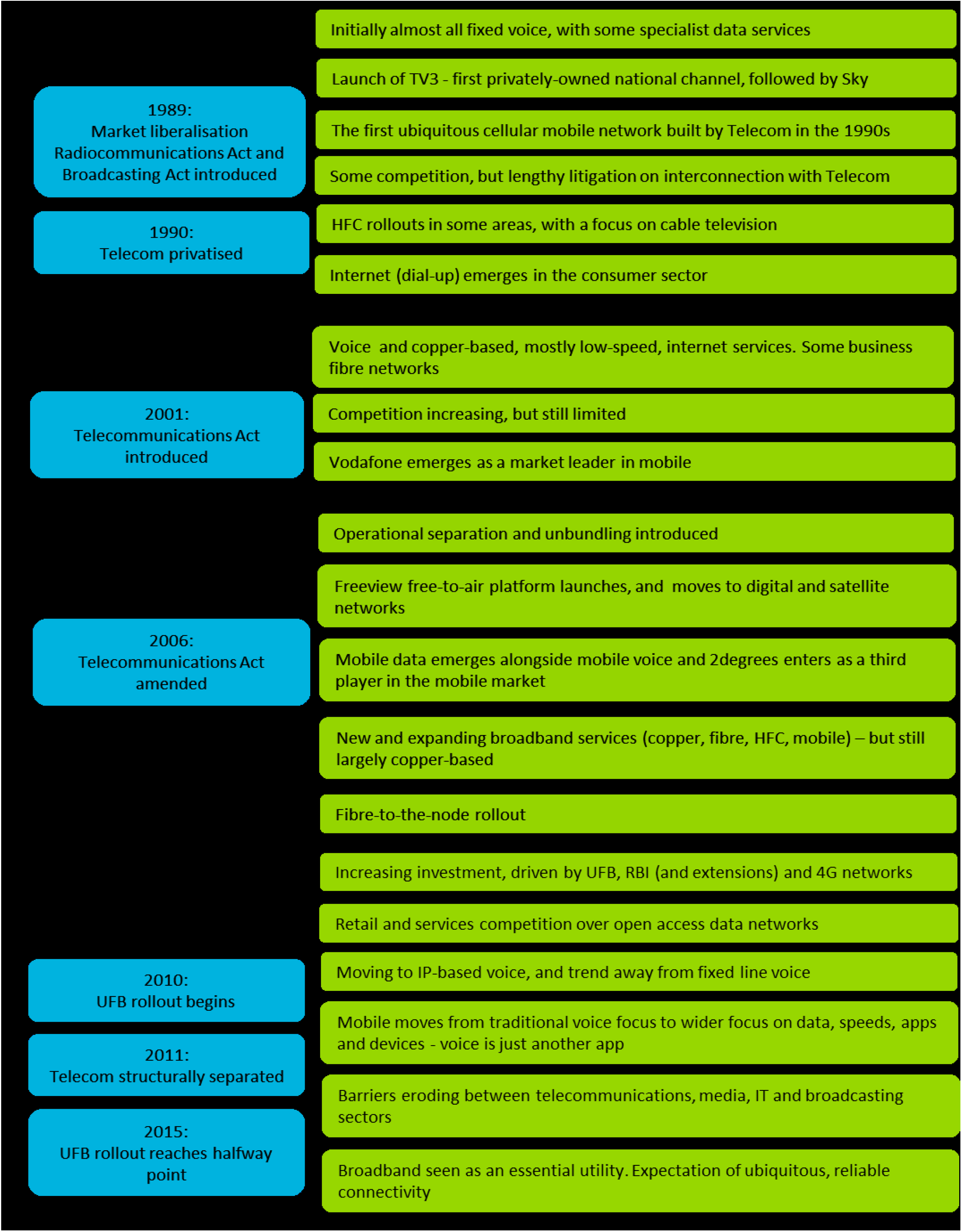 Figure1: New Zealand Regulations History for Telecommunications; from the Ministry of Business and Employment; ?Regulating communications for the future: Review of the Telecommunications Act 2001? (NZ MBIE, 2015)
Figure1: New Zealand Regulations History for Telecommunications; from the Ministry of Business and Employment; ?Regulating communications for the future: Review of the Telecommunications Act 2001? (NZ MBIE, 2015)
Telecommunications Industry
In NZ the Telecommunications industry is broadly categorised as fixed-line infrastructure, fixed-line retail and mobile (NZ MBIE, 2015). In fixed-line infrastructure all the operators provide fixed lines including fibre and coaxial, while the fixed-line retail sector targets ordinary users and provides them with their telecommunications services using any fixed-line infrastructure. On the other hand, mobile services are targeting wireless communications where voice, text and data services are provided to the customers "on the go". Table 2 categorises telecommunication companies operating in NZ.
Table 2: Telecommunications Industry
|
|
Service Category |
Companies involved |
|
1 |
Fixed-line Infrastructure |
Chorus, Hybrid Fibre-Coaxial Network by Vodafone and NZ?s local fibre companies including Northpower Ltd., Waikato Networks Ltd. and Enabled Services Ltd. |
|
2 |
Fixed-line Retailer |
Spark, Vodafone, Callplus |
|
3 |
Mobile |
Spark, Vodafone, 2 degrees |
Telecom Infrastructure
In NZ, the Telecom Infrastructure (including optical fibre) is maintained by Chorus, NZ's largest telecommunications network operator together with Crown Fibre Holdings. In addition to greater Auckland, Chorus has marked the start of the ultra-fast broadband (UFB) rollout in Wellington by deploying new network infrastructure in Kelson (Chorus NZ, 2011).
The UFB is being deployed in Christchurch City (South Island of NZ) by another company called Enable (Optical fibre deployment in Christchurch, n.d.). Overall, the NZ government regulates the investment and development of both fixed and wireless networks infrastructure in the country using the Telecom Act 2001 (Telecommunications Act, 2001).
Telecom Services
1. Fixed-line telecom services
The NZ telecom industry continues to grow; however, the use of traditional fixed-line services has decreased since 2016 (Fixed Line Telecoms in NZ, 2015). There is an expected increase for fixed-line services forecasted as those connections improve their quality (NZ MBIE, 2015). Figure 2 shows the decrease in fixed-line users since 2013.
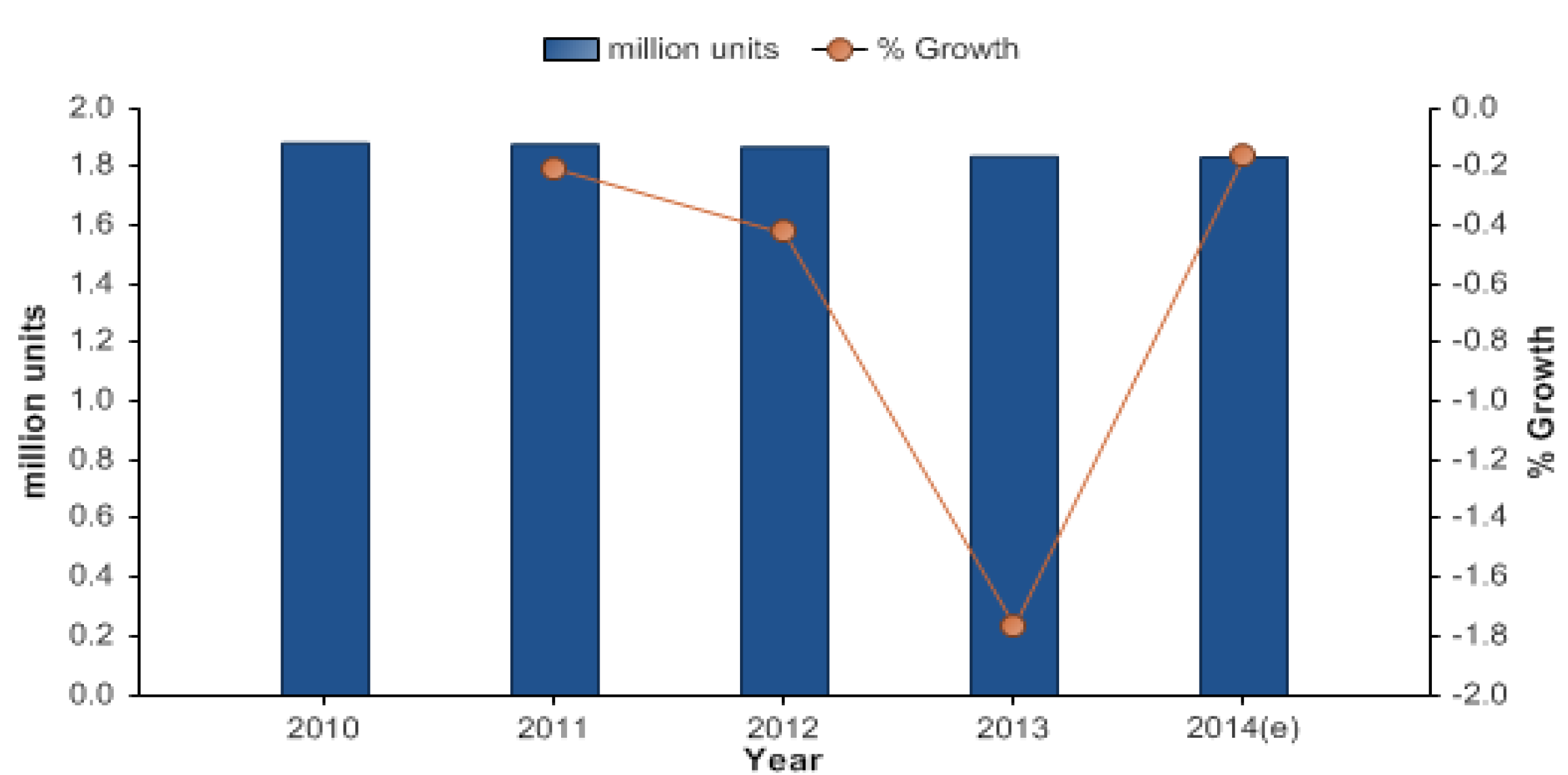 Figure 2: Fixed-line telecommunications market volume in NZ: million units, 2010?14(e) (Fixed Line Telecoms in NZ, 2015) from MarketShare
Figure 2: Fixed-line telecommunications market volume in NZ: million units, 2010?14(e) (Fixed Line Telecoms in NZ, 2015) from MarketShare
Spark (formerly Telecom Corporation of NZ) is still leading the fixed-line telecom services market in NZ and has 58.1% share of the current market (Fixed Line Telecoms in NZ, 2015). Figure 3 shows the market share for fixed-line telecom services among Spark, Vodafone and others.
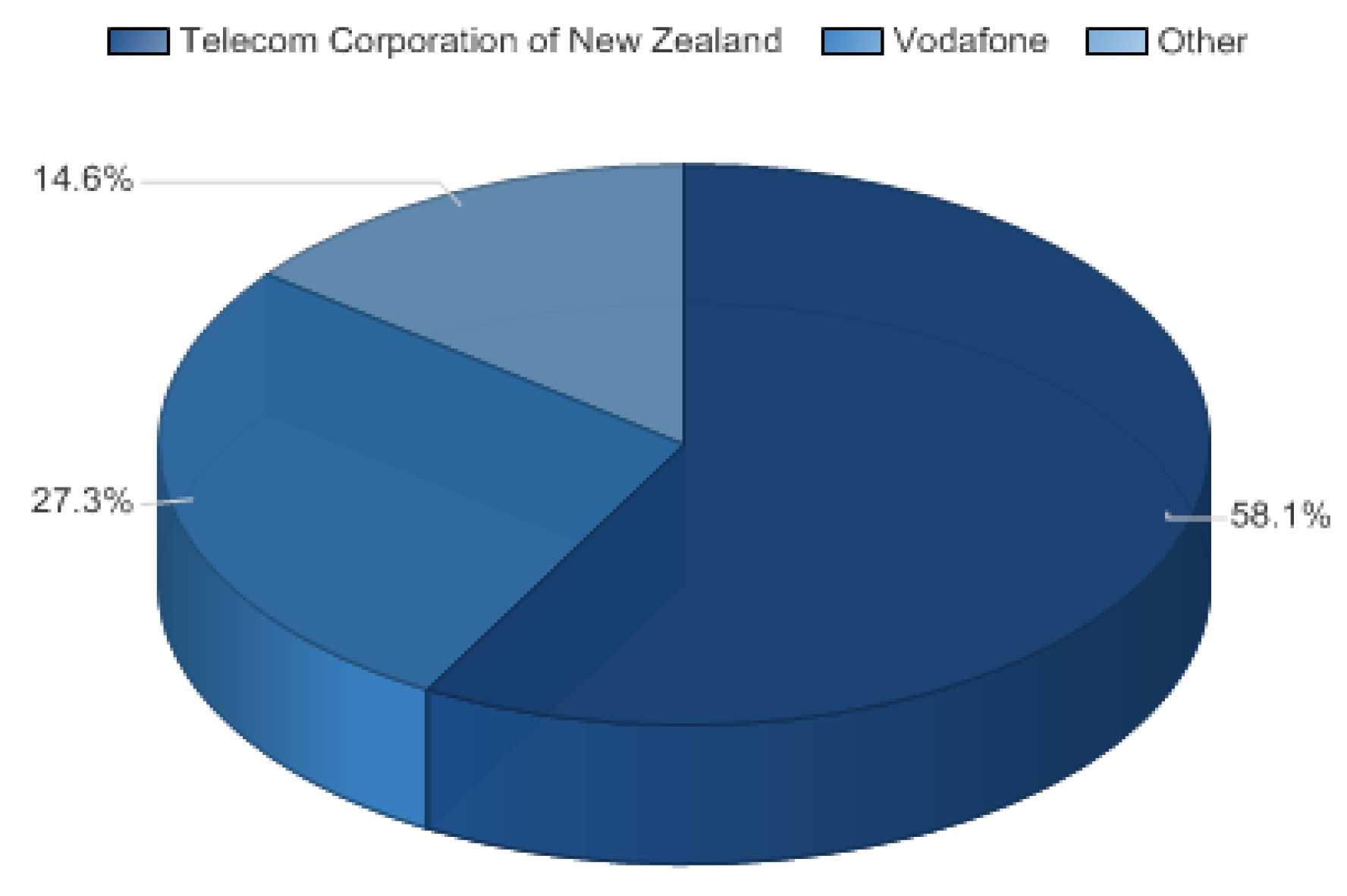 Figure 3: Fixed-line telecommunications market share in NZ: % share, by value, 2014(e) (Fixed Line Telecoms in NZ, 2015) from MarketShare
Figure 3: Fixed-line telecommunications market share in NZ: % share, by value, 2014(e) (Fixed Line Telecoms in NZ, 2015) from MarketShare
2. Wireless telecom services
NZ telecom users are more inclined to the use of wireless telecom services. The focus is on high speed data and mobility (NZ MBIE, 2015). There is a growing demand for using various services over the high speed data network without compromising on mobility. However, voice still plays the major role in wireless telecom services. As shown in Figure 4, voice services occupy the majority segment for wireless telecom usage (Wireless Telecommunication Services in NZ, 2015).
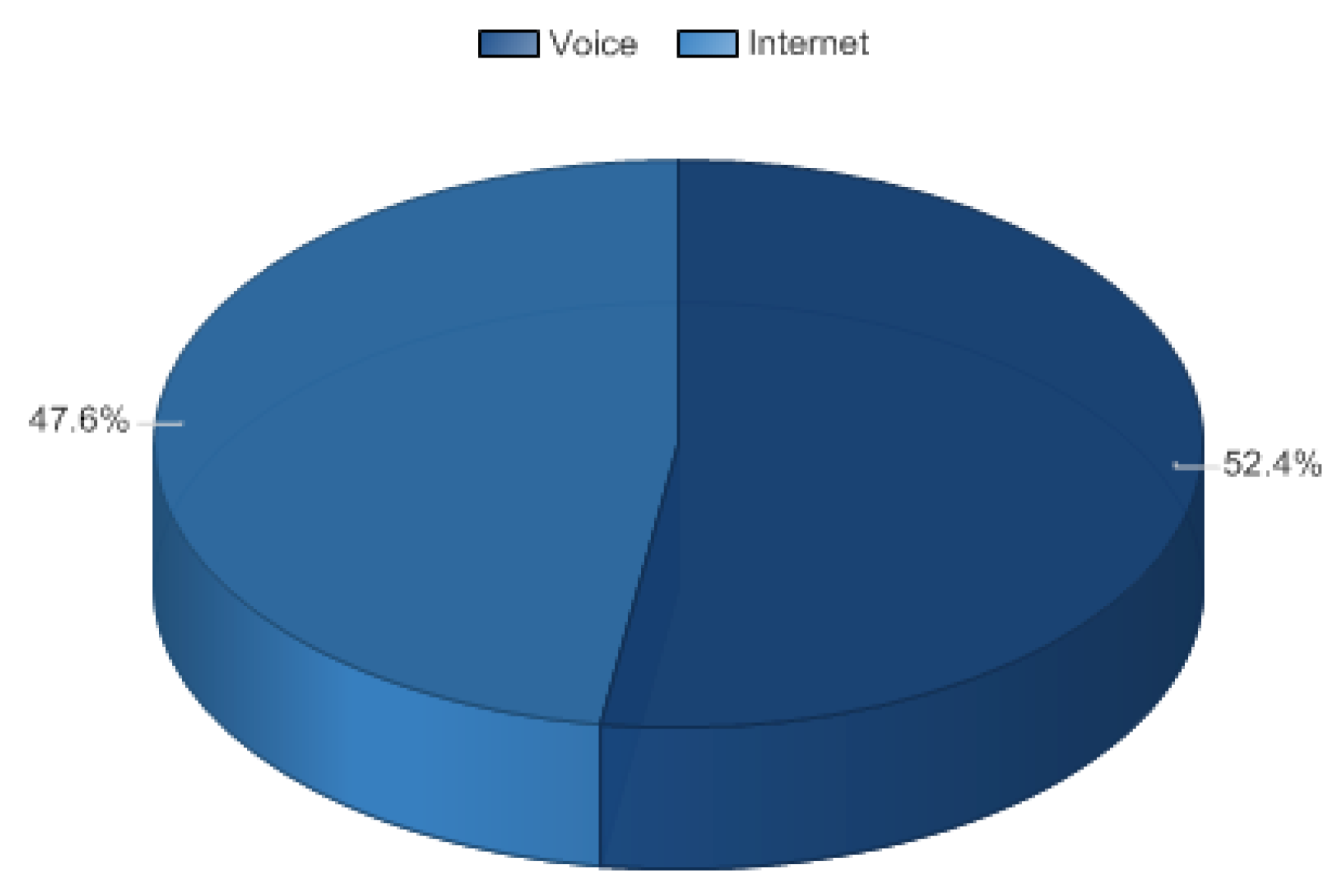 Figure 4: Segmentation of wireless telecom services market in NZ: % share, by value, 2015(e) (Wireless Telecommunication Services in NZ, 2015) from MarketShare
Figure 4: Segmentation of wireless telecom services market in NZ: % share, by value, 2015(e) (Wireless Telecommunication Services in NZ, 2015) from MarketShare
In contrast to the fixed-line telecom services, for wireless telecommunications services Vodafone is the market leader with a 38.4% market share (Wireless Telecommunication Services in NZ, 2015). Spark is struggling to keep its tradition of leading the telecom market and is very close to Vodafone with a 35.5% market share (Wireless Telecommunication Services in NZ, 2015). Figure 5 gives an overview of NZ?s market share for wireless telecom services for various companies.
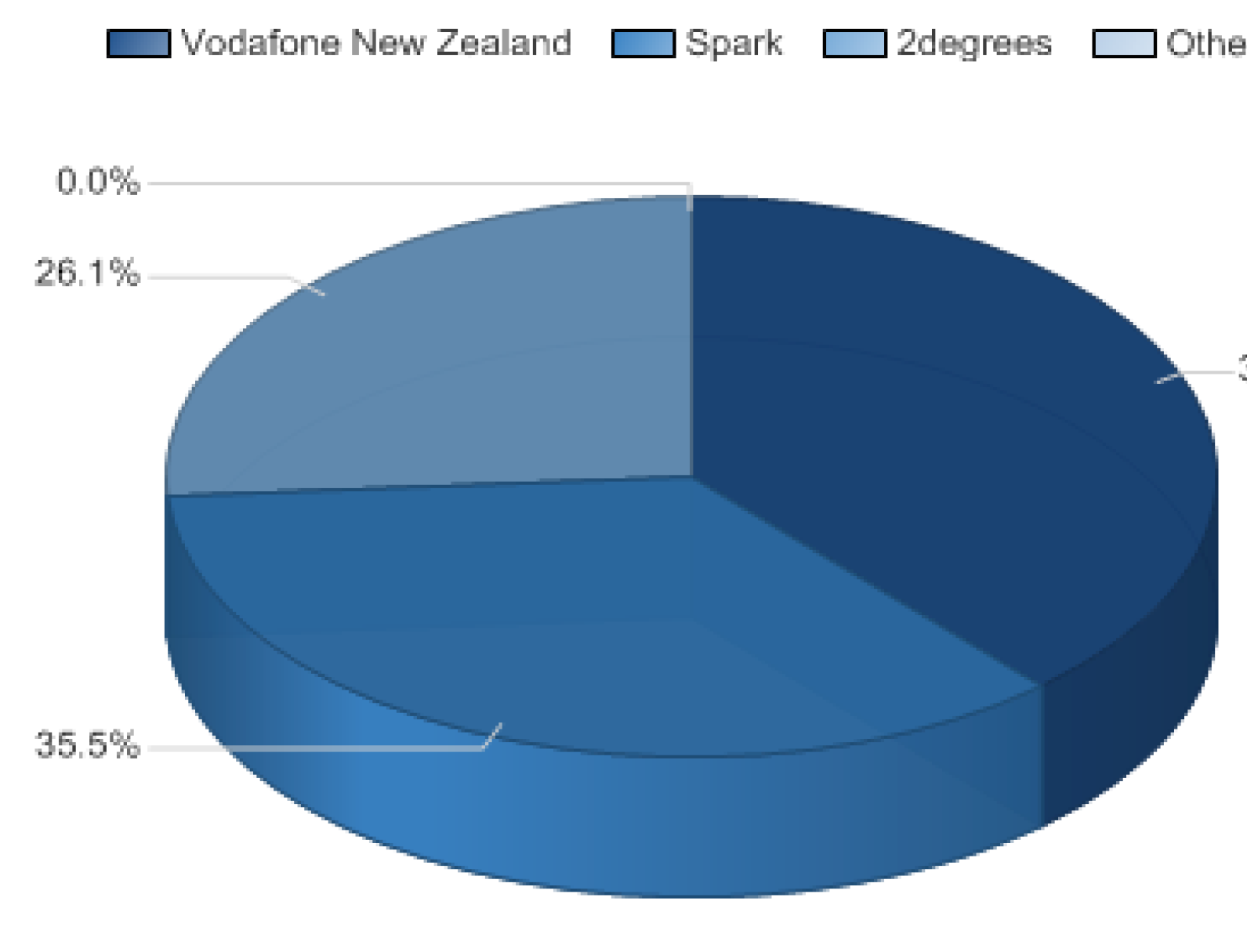 Figure 5: Wireless telecom services market share in NZ: % share, by volume, 2015(e) (Wireless Telecommunication Services in NZ, 2015). from MarketShare
Figure 5: Wireless telecom services market share in NZ: % share, by volume, 2015(e) (Wireless Telecommunication Services in NZ, 2015). from MarketShare
The wireless telecommunications sector is growing rapidly in New Zealand. Despite a small industry, NZ now constitutes 0.6% of the ?Asia-Pacific Telecommunication Services? market value. Figure 6 illustrates NZ?s share of the wireless telecom market in the Asia-Pacific region.
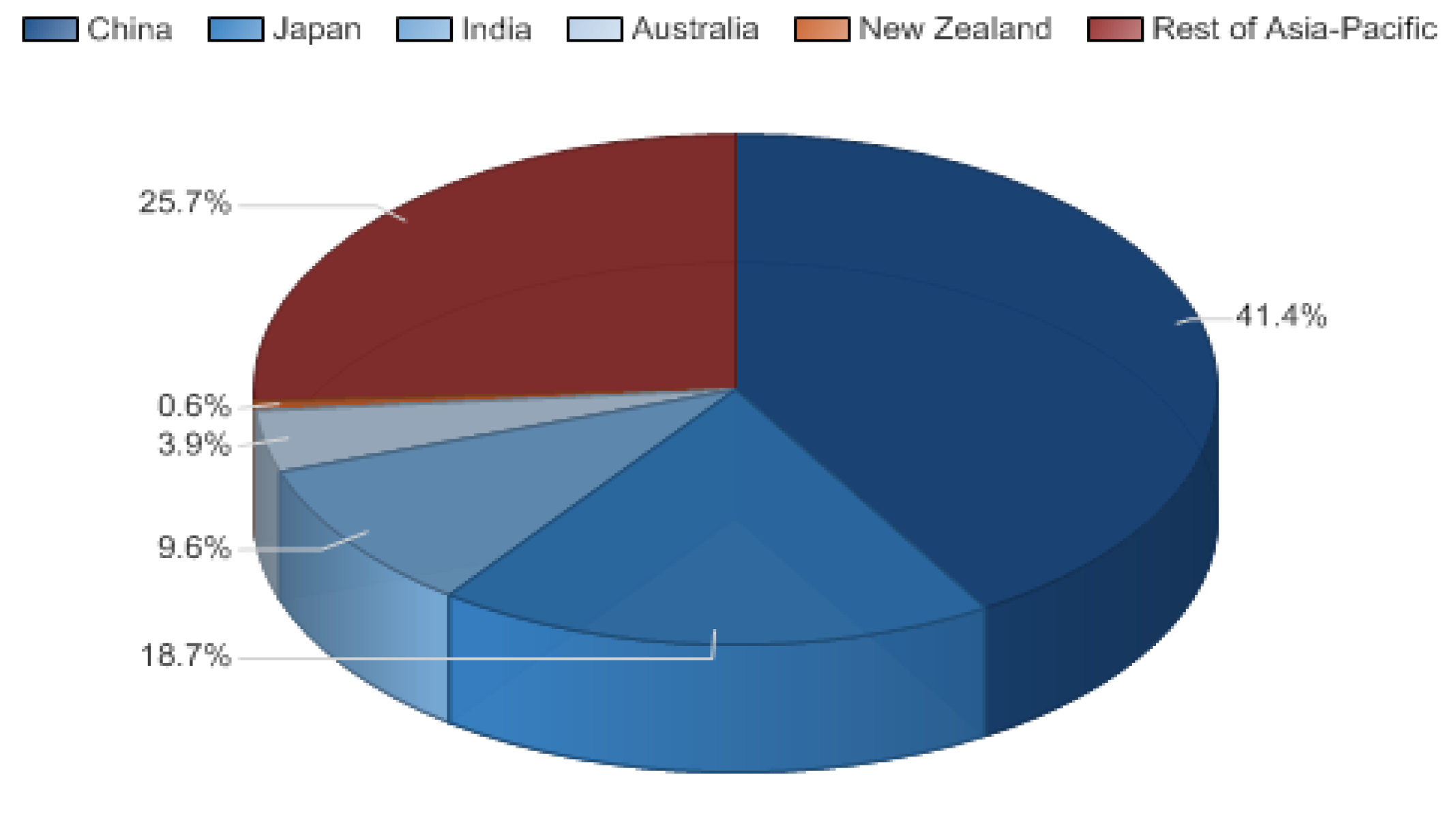 Figure 6: Geographical segmentation of wireless telecom in NZ: % share, by value, 2015(e) (Wireless Telecommunication Services in NZ, 2015) from MarketShare
Figure 6: Geographical segmentation of wireless telecom in NZ: % share, by value, 2015(e) (Wireless Telecommunication Services in NZ, 2015) from MarketShare
Current issues
The demand for high-speed communication with mobility is the key factor in the current picture of NZ?s Telecom Sector. This demand is determined by the customer behaviour and demand for IT technologies and services (Chorus Quarterly Broadband Market Update, 2015). Currently New Zealanders are considered to be the fastest adopters of fixed broadband technologies more specifically Fibre (Telecommunications Enabling NZ?s Future, 2016). Figure 7 depicts NZ?s adoption of fibre technology and it compares it with several other countries.
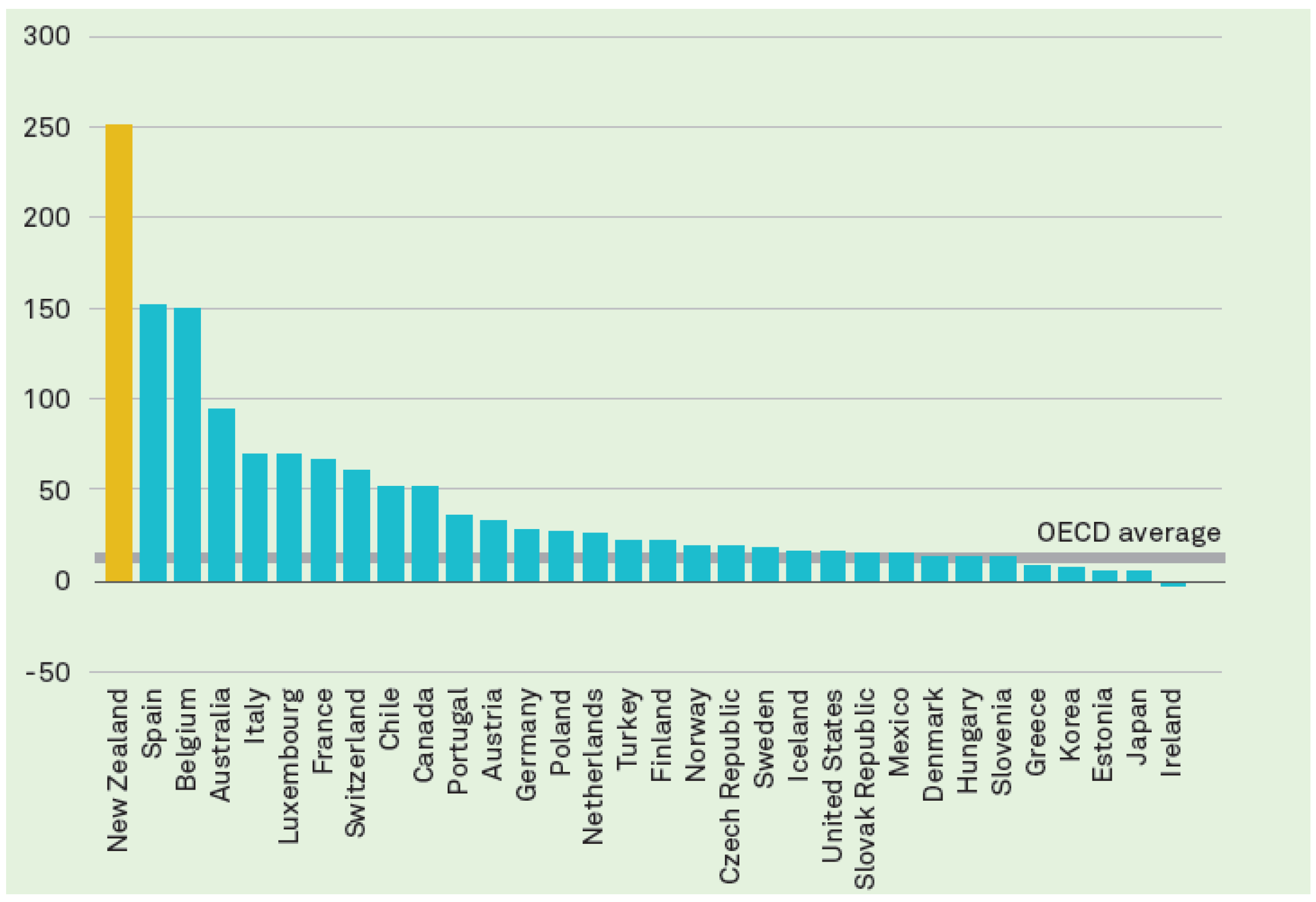 Figure 7: Fibre connection growth for various countries; from Dec. 2014 to Dec. 2015 (Telecommunications Enabling NZ?s Future, 2016)
Figure 7: Fibre connection growth for various countries; from Dec. 2014 to Dec. 2015 (Telecommunications Enabling NZ?s Future, 2016)
The high usage of Internet and related services is also highlighted in the NZ Telecommunication?s Forum (TCF) report of 2016 (Telecommunications Enabling NZ?s Future, 2016). The report focused on the continuing high usage of technology by New Zealanders. Figure 8 shows the data taken from the report presenting the main activities of Internet users. One can observe the steady increase in the use of Internet services in the country from 2006 to 2012. Internet Banking is regarded as one of the most popular activities by the Internet users, followed by social networking.
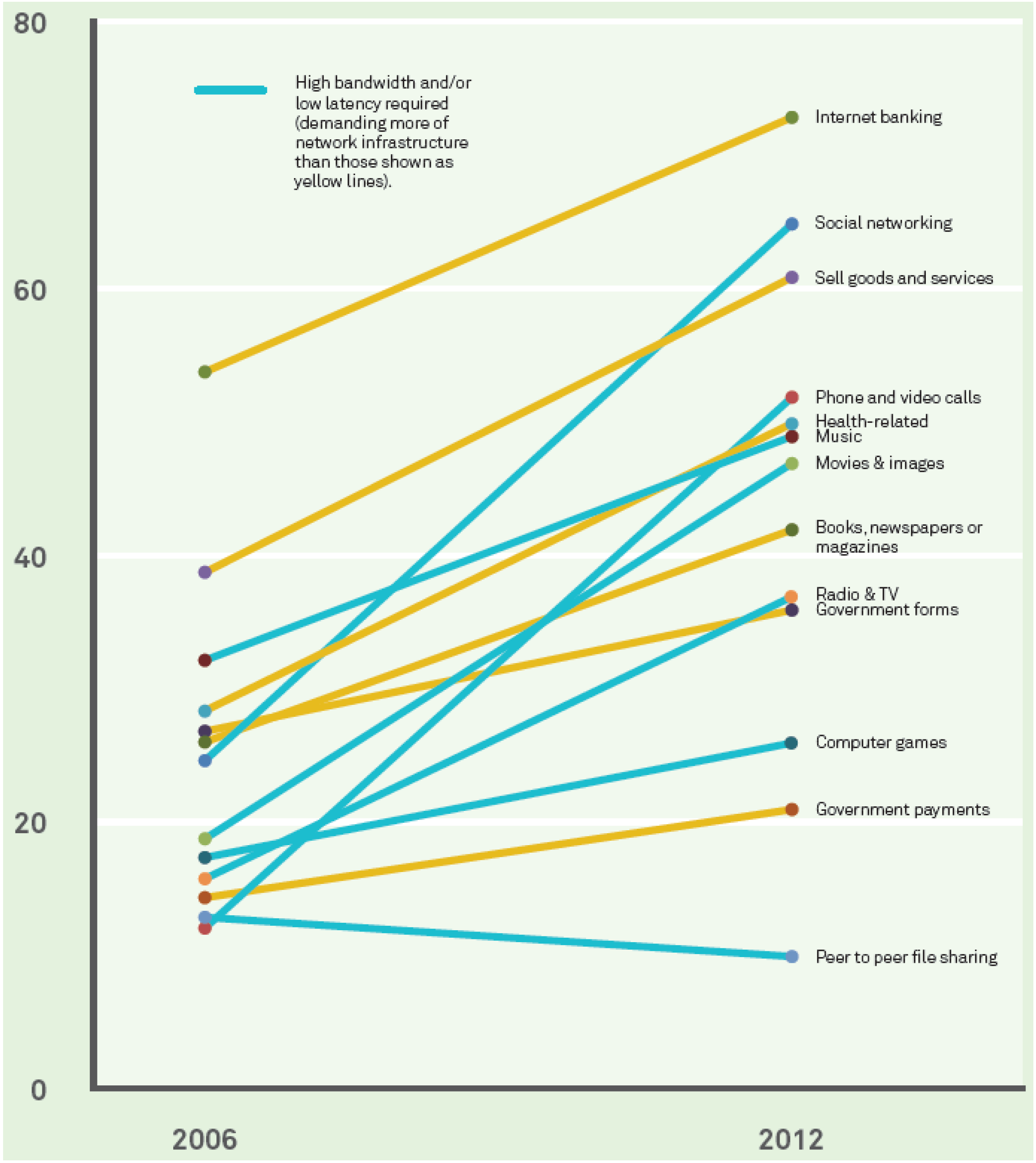 Figure 8: Internet users? activities (in percentage) (Telecommunications Enabling NZ?s Future, 2016)
Figure 8: Internet users? activities (in percentage) (Telecommunications Enabling NZ?s Future, 2016)
With the increase of internet usage of related services, especially video streaming, the Ministry of Commerce is forecasting an explosion in the usage of data (NZ MBIE, 2015). To satisfy the thirst for increasing connectivity, New Zealanders are adopting the use of high data packages or even moving to unlimited data packages (Telecommunications Enabling NZ?s Future, 2016). Figure 9 shows the increase in usage of high data packages from 2012 to 2014. One can observe that there is a growing demand for high data packages even for unlimited packages in NZ.
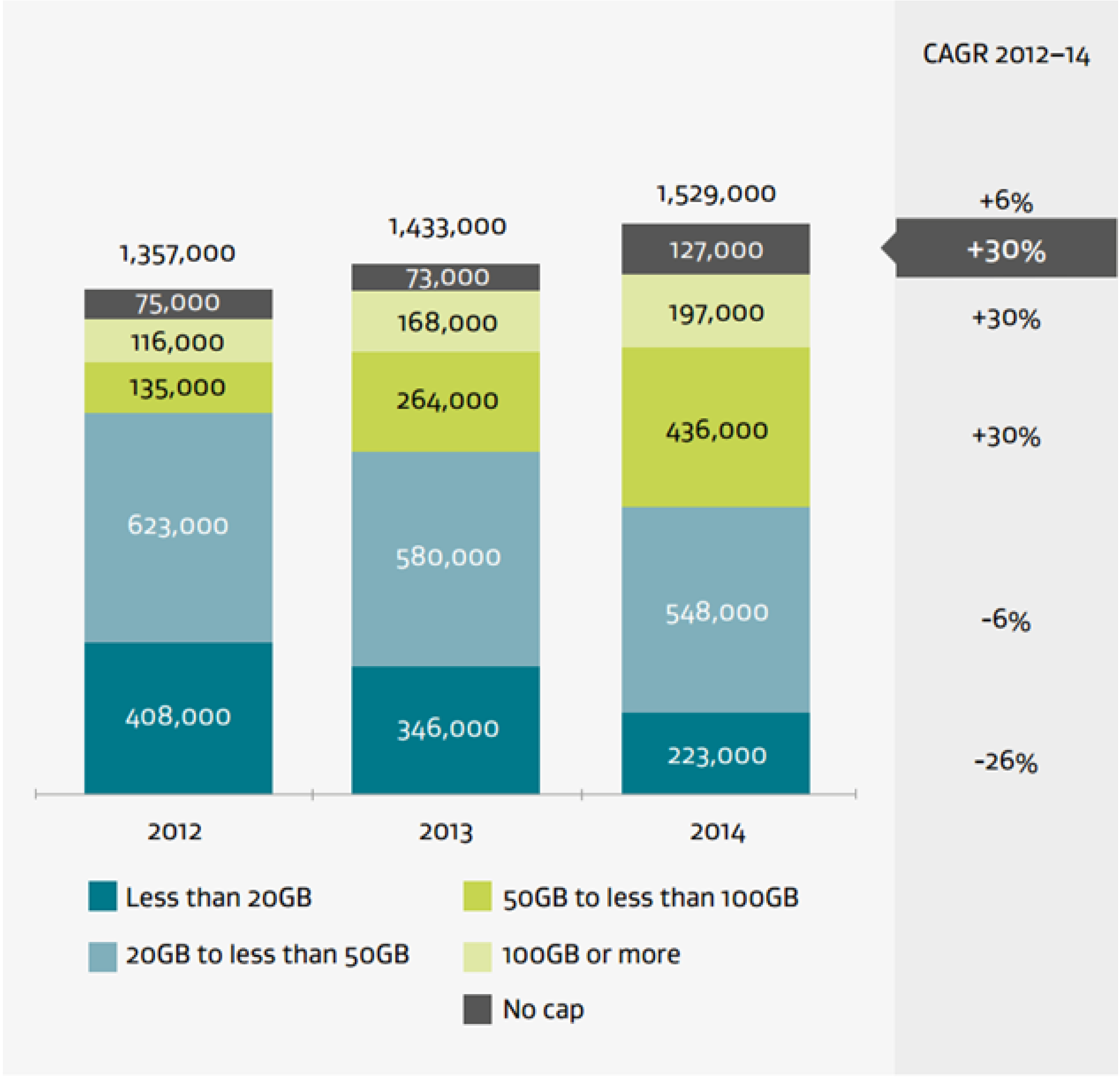 Figure 9: from Ministry of Business, Innovation & Employment, NZ Sectors Report Series, Information and Communications Technology, 2015.
Figure 9: from Ministry of Business, Innovation & Employment, NZ Sectors Report Series, Information and Communications Technology, 2015.
Current forecasts indicate that data usage will continue to grow which also increases the competition for service providers; MBIE recognises this situation and trend and it has started working on the legislation to provide better communication services with reasonable prices to the customers while maintaining healthy competition in the market (NZ MBIE, 2015).
Legislation and regulations affecting telecommunications market competition
The Commerce Commission of NZ (NZ Commerce Commission, n.d.) is the government agency which is responsible for enforcing the legislation in NZ. The main purpose is to encourage healthy competition in the country so New Zealanders can enjoy quality of product/services at competitive prices.
The first formal step in the relevant legislation was the Commerce Act 1986 (Commerce Act, 1986) which was shortly followed by the Telecommunications (Residual Provision) Act 1987 (Telecommunications (Residual Provisions) Act, 1987). April 01, 1989 is regarded as the first day of competition among the telecommunication service providers (NZ Statistics, n.d.). Later on, the Telecommunications Act 2001 (Telecommunications Act, 2001) is considered as the main legislation for the telecom industry in NZ.
With the privatisation of Telecom NZ Ltd. in 1990 (NZ Statistics, n.d.), competition in the telecom industry really started to flourish. Various companies showed their interest in entering the industry and, since then, the investments in the telecom industry have continued to grow. Figure 10 shows the growth in telecom investments in NZ from 2005 to 2015 (2015 Annual Telecommunications Monitoring Report, 2016).
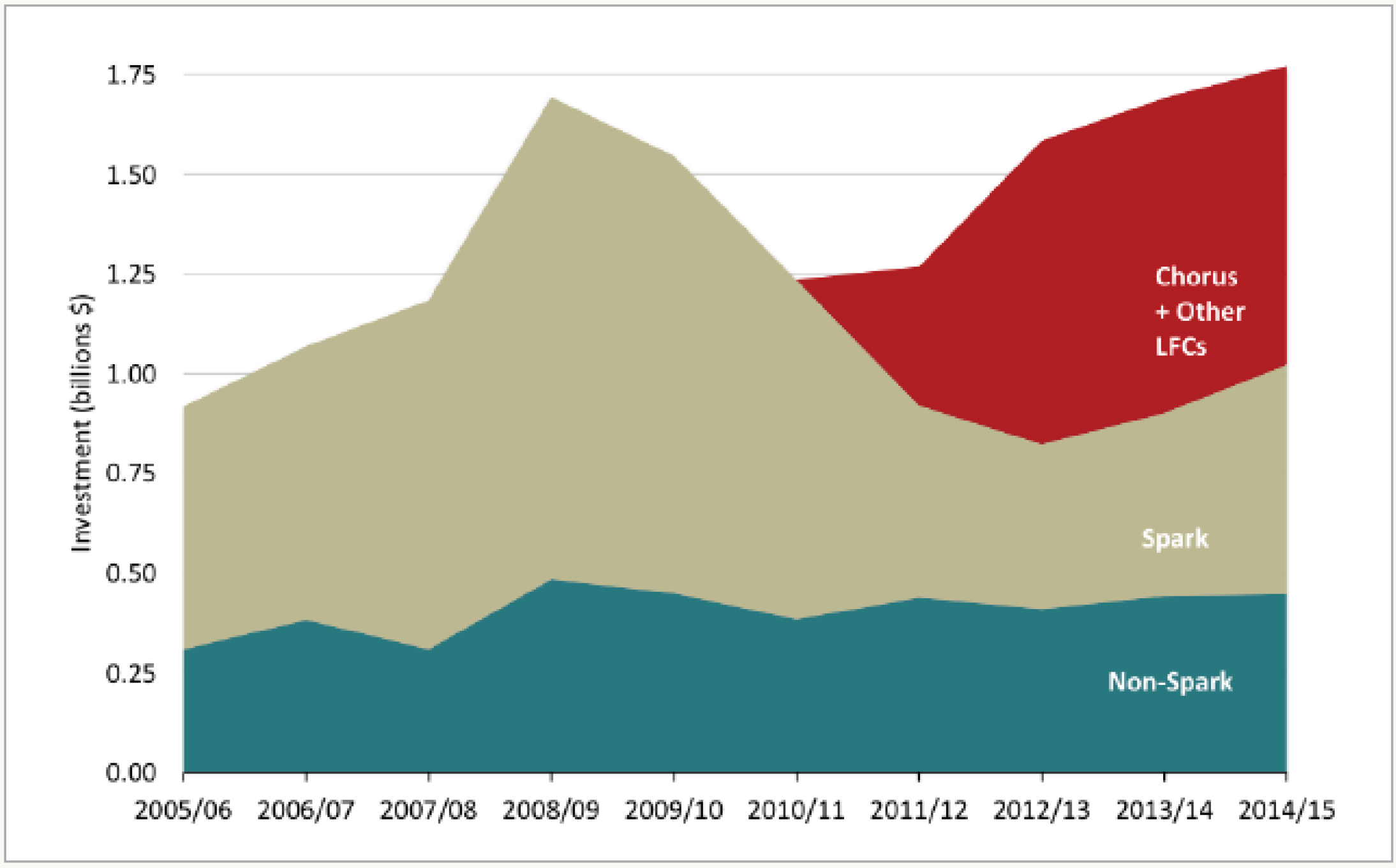 Figure 10: Investment in Telecommunications Industry, NZ (2015 Annual Telecommunications Monitoring Report, 2016)
Figure 10: Investment in Telecommunications Industry, NZ (2015 Annual Telecommunications Monitoring Report, 2016)
Currently the Commerce Commission is using the Telecommunication Act 2001 (Telecommunications Act, 2001) as the basis for regulation and legislation. The Act enables the commission to regulate the provision of telecommunication services in the country. In addition to the other functions of the Act, it is stated in it that the Act ?must monitor competition in telecommunications markets and the performance and development of telecommunications markets? (Telecommunications Act, 2001). Table 3 lists the Acts and the corresponding main purpose that have been used to regulate the telecommunications industry in NZ.
Table 3: Telecommunications Regulatory Acts in NZ
|
Year |
Act |
Main purpose/Goal |
|
1986 |
Commerce Act 1986 (Commerce Act, 1986) |
Regulates trade practices |
|
1987 |
Telecommunications (Residual Provisions) Act 1987 (Telecommunications (Residual Provisions) Act, 1987) |
Regulates the telecommunication service providers (residual provision) |
|
1989 |
Broadcasting Act 1989 (Broadcasting Act, 1989) |
Regulates linear broadcasting services (social aspects) |
|
1989 |
Radio-communications Act 1989 (Radiocommunications Act, 1989) |
Regulates creation and registration of right to use radio spectrum |
|
1903 |
Wireless Telegraphy Act 1903 (Wireless Telegraphy Act, 1903) |
Regulates the message passing using electricity |
|
2001 |
Telecommunications Act 2001 (Telecommunications Act, 2001) |
Establishes regulatory access regime and promotes competition |
|
2007 |
Unsolicited Electronic Messages Act 2007 (Unsolicited Electronic Messages Act, 2007)
|
To promote safer and securer environment for Information and communication technologies in NZ by prohibited the prohibit unsolicited commercial electronic messages with a New Zealand link from being sent |
|
2013 |
Telecommunications (Interception Capability and Security) Act 2013 (Telecommunications (Interception Capability and Security) Act, 2013) |
Regulates the interception of telecommunication services by surveillance agencies |
Recommendations for changes to legislation and regulations
The regulatory regime for telecommunications in NZ should be governed by the following five principles (NZ MBIE, 2015); these principles are consistent with the requirements of the Telecommunications Act 2001 (Telecommunications Act, 2001):
- Clear Necessity: Proper and clear justification for the need should be mentioned; regulations should not be imposed.
- Predictability: There should be predictability and stability in the regulation regime.
- Proportionality: The efforts put in following the regulations should constitute a fair proportion of the benefits accrued and the associated potential harm.
- Transparency and Accountability: The enforcement and development of the telecom regulations should be transparent and the regulatory body should be accountable for all the actions taken in this regard.
- Flexibility, including technology neutrality: The legislation and regulations regime should be flexible in approach and administration.
In view of the rapidly changing environment of the telecommunications industry, two recommendations (i.e. market competition and meeting expectations) and a guideline for changes to the existing legislation and regulations in NZ are provided. These recommendations are based on the current and on-going demand for telecommunication services in the country as discussed in the previous sections.
Market Competition:
The telecommunications legislation regime in NZ should create a healthy market competition within the companies/industries. Avoiding any particular company having a monopoly will also help the regulatory bodies to exert indirect control over the pricing of the telecommunications services.
Meeting Expectations:
The telecommunications legislation regime in NZ should meet the expectations of customers, industry and administrative bodies (which are responsible for monitoring and enforcing the legislations). Meeting customers? expectations may involve providing agreed QoS with better prices; meeting industry expectations may include encouraging innovation and healthy industry environment to achieve their business objectives. Moreover, the telecommunications legislation regime should also support a cyclic approach for monitoring the existing regulations and to support proactive measures to be taken for legislations proper administration.
Guideline:
Both the market competition and meeting expectations should be implemented along with the five existing legislation principles for telecommunications legislation in NZ. Figure 11 shows the proposed guideline/framework. It is anticipated that this will help the telecommunications regime in NZ to cope with the rapid growth and changing demands of the telecom industry in the country.
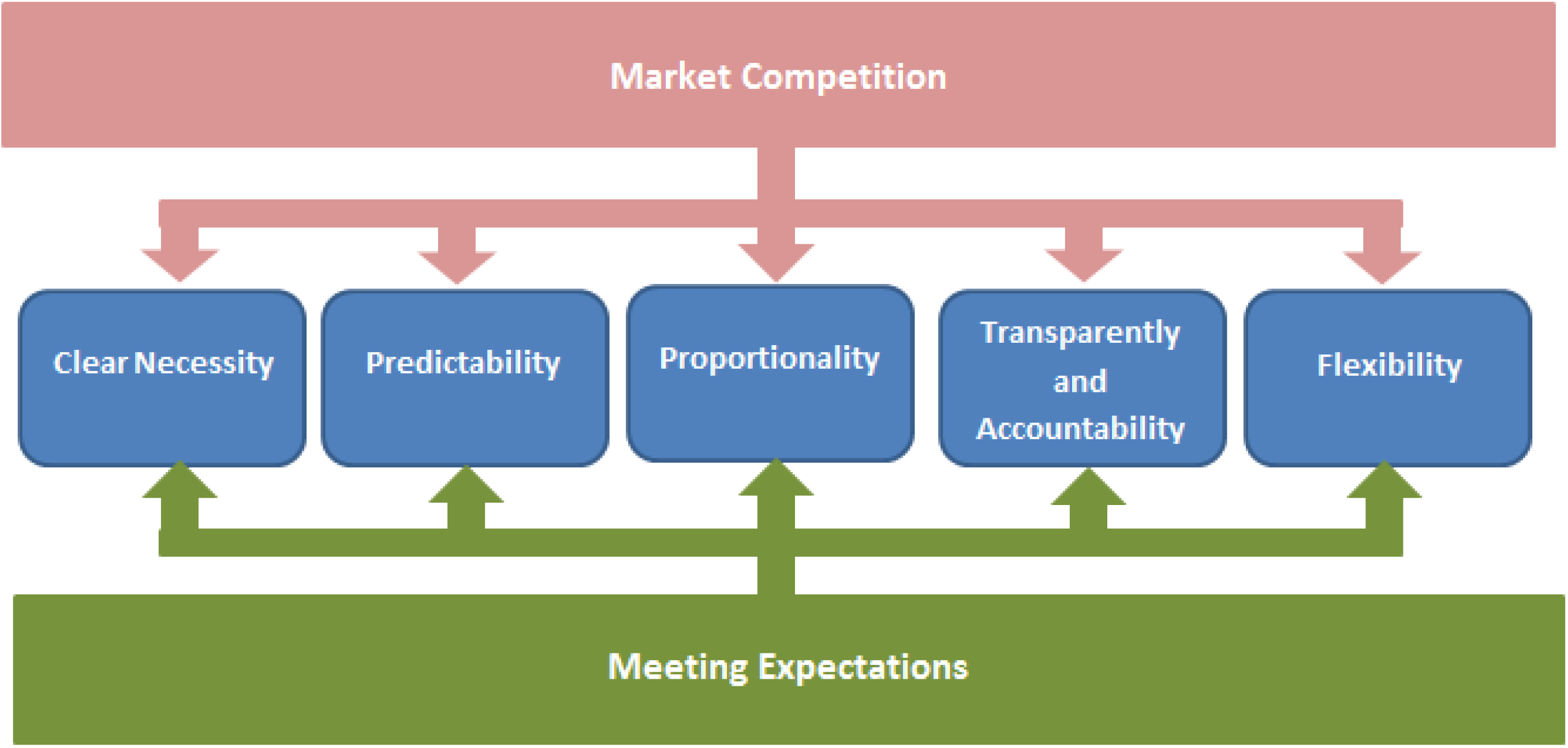 Figure 11. The proposed guideline/framework for integrating market competition and meeting expectations with the existing five legislation principles
Figure 11. The proposed guideline/framework for integrating market competition and meeting expectations with the existing five legislation principles
Concluding remarks
The telecommunications industry of NZ is rapidly growing. The growth is not only in terms of volume but also in terms of changing needs and technology. The Ministry of Business, Innovation and Employment is the government agency which deals with telecommunications legislation. The Commerce Commission of NZ is responsible for enforcing the regulations as per the approved legislative Acts. In NZ the existing legislation related to the telecom industry is bound to the Telecommunications Act 2001 (Telecommunications Act, 2001). To address the challenges of the existing telecommunications industry some changes in the existing legislation regime are essential. However, this paper provides two recommendations and one guideline that would help telecommunications legislation regime will be strengthened and would be able to address the challenging needs of the telecom industry in NZ.
References
2015 Annual Telecommunications Monitoring Report. (2016). Available from: https://www.comcom.govt.nz/dmsdocument/14286 date of access: 26-Oct-2016
Broadcasting Act. (1989). Available from: http://www.legislation.govt.nz/act/public/1989/0025/latest/DLM155365.html date of access: 7-Oct-2016
Chorus NZ. (2011). Available from: https://www.chorus.co.nz/ultra-fast-broadband-rollout-begins-in-wellington date of access: 08-Dec-2016
Chorus Quarterly Broadband Market Update. (2015). Available from: https://www.chorus.co.nz/file/62858/Q1-2015---Quarterly-Market-Update---March-2015-v2.pdf date of access: 20-Oct-2016
Commerce Act. (1986). Available from: http://www.legislation.govt.nz/act/public/1986/0005/latest/DLM87623.html date of access: 26-Oct-2016
Fixed Line Telecoms in NZ. (2015). MarketLine Industry Profile; reference code: 0126-2233. Available from: http://store.globaldata.com/market-reports/telecommunications/fixed-line-telecoms-in-new-zealand date of access: 18-Oct-2016
NZ Commerce Commission (n.d.). Available from: http://www.comcom.govt.nz/ date of access: 5-Oct-2016
NZ History (n.d.). Available from: http://www.nzhistory.net.nz/ date of access: 7-Oct-2016
NZ Legislation (n.d.). Available from: http://www.legislation.govt.nz/ date of access: 6-Oct-2016
NZ MBIE (n.d.). Available from: http://www.mbie.govt.nz/ date of access: 5-Oct-2016
NZ MBIE. (2015), ?Regulating communications for the future: Review of the Telecommunications Act 2001; ISBN 978-0-908335-69-5. Available from: http://www.mbie.govt.nz/info-services/sectors-industries/technology-communications/communications/regulating-the-telecommunications-sector/review-of-the-telecommunications-act-2001/consultation-8-sept-2015/telecommunications-review-2015 date of access: 18-Oct-2016
NZ Statistics (n.d.). Available from: http://www2.stats.govt.nz date of access: 26-Oct-2016
NZ Telecommunications Forum (n.d.). Available from: http://www.tcf.org.nz/ date of access: 5-Oct-2016
Optical fibre deployment in Christchurch (n.d.). Available from: https://www.enable.net.nz/ date of access: 08-Dec-2016
Radio Spectrum Management of NZ (n.d.). Available from: http://www.rsm.govt.nz/ date of access: 7-Oct-2016
Radiocommunications Act. (1989). Available from: http://www.legislation.govt.nz/act/public/1989/0148/latest/DLM195576.html date of access: 17-Oct-2016
Telecommunications (Araneo Limited) Network Operator Declaration, Sept. 16, 2010. Available from: https://gazette.govt.nz/notice/id/2010-go7131 date of access: 15-Oct-2016
Telecommunications (Christchurch International Airport Limited) Network Operator Declaration, Feb. 25, 2010. Available from: https://gazette.govt.nz/notice/id/2010-go1347 date of access: 15-Oct-2016
Telecommunications (Datalight Limited) Network Operator Declaration, Dec. 18, 2008. Available from: https://gazette.govt.nz/notice/id/2008-go9683 date of access: 14-Oct-2016
Telecommunications (Enable Networks Limited) Network Operator Declaration, Oct. 6, 2011. Available from: https://gazette.govt.nz/notice/id/2011-go6886 date of access: 15-Oct-2016
Telecommunications (Hamilton Fibre Network Limited and Velocity Networks Limited) Network Operator Declaration, Aug. 7, 2008. Available from https://gazette.govt.nz/notice/id/2008-go5567 date of access: 14-Oct-2016
Telecommunications (Interception Capability and Security) Act. ( 2013). Available from: http://www.legislation.govt.nz/act/public/2013/0091/latest/DLM5177923.html date of access: 27-Oct-2016
Telecommunications (Northpower Limited) Network Operator Declaration, Mar. 13, 2008. Available from: https://gazette.govt.nz/notice/id/2008-go1655 date of access: 14-Oct-2016
Telecommunications (Pacific Fibre Limited) Network Operator Declaration, Sept. 29, 2011. Available from: https://gazette.govt.nz/notice/id/2011-go6637 date of access: 15-Oct-2016
Telecommunications (Residual Provisions) Act. (1987). Available from: http://www.legislation.govt.nz/act/public/1987/0116/7.0/DLM119012.html date of access: 6-Oct-2016
Telecommunications (Snap Internet Limited) Network Operator Declaration, May 5, 2011. Available from: https://gazette.govt.nz/notice/id/2011-go2946 date of access: 15-Oct-2016
Telecommunications (TSO, Broadband, and Other Matters). Amendment Act 2011. Available from: http://www.legislation.govt.nz/act/public/2011/0027/latest/DLM3629674.html date of access: 18-Oct-2016
Telecommunications (Ultrafast Broadband Limited) Network Operator Declaration, Aug. 18, 2011. Available from: https://gazette.govt.nz/notice/id/2011-go5531 date of access: 15-Oct-2016
Telecommunications (UltraFast Fibre Limited) Network Operator Declaration, May 12, 2011. Available from: https://gazette.govt.nz/notice/id/2011-go3053 date of access: 17-Oct-2016
Telecommunications (Unison Fibre Limited) Network Operator Declaration, Sept. 1, 2011. Available from: https://gazette.govt.nz/notice/id/2011-go5977 date of access: 17-Oct-2016
Telecommunications (Unison Networks Limited) Network Operator Declaration, Aug. 20, 2009. Available from: https://gazette.govt.nz/notice/id/2009-go6926 date of access: 15-Oct-2016
Telecommunications (Vivid Networks Limited) Network Operator Declaration, Sept. 16, 2010. Available from: https://gazette.govt.nz/notice/id/2010-go7130 date of access: 15-Oct-2016
Telecommunications (WASP NZ Limited) Network Operator Declaration, Apr. 9, 2009. Available from: https://gazette.govt.nz/notice/id/2009-go3198 date of access: 15-Oct-2016
Telecommunications Act. (2001). Available from: http://www.legislation.govt.nz/ date of access: 6-Oct-2016
Telecommunications Enabling NZ?s Future. (2016). Available from: http://www.tcf.org.nz/library/eea6e5c3-3590-457c-b7d2-40e5bdb6eaaa.cmr date of access: 20-Oct-2016
Telecommunications Network Operator (Civic Enterprises Limited) Order. (1989). Available from: http://www.legislation.govt.nz/regulation/public/1989/0299/latest/DLM133316.html date of access: 7-Oct-2016
Telecommunications Network Operator (Integrity Television Limited) Order. (1996). Available from: http://www.legislation.govt.nz/regulation/public/1996/0085/latest/DLM209642.html date of access: 12-Oct-2016
Telecommunications Network Operator (Kiwi Cable Company Limited) Order. (1990). Available from: http://www.legislation.govt.nz/regulation/public/1990/0092/latest/DLM138130.html date of access: 10-Oct-2016
Telecommunications Network Operator (Powerco Limited) Order. (2001). Available from: http://www.legislation.govt.nz/regulation/public/2001/0138/latest/DLM49241.html date of access: 14-Oct-2016
Telecommunications Network Operator (Sky Network Television Limited) Order. (1990). Available from: http://www.legislation.govt.nz/regulation/public/1990/0076/latest/DLM136565.html date of access: 10-Oct-2016
Telecommunications Network Operator (Trans Power NZ Limited) Order. (1992). Available from: http://www.legislation.govt.nz/regulation/public/1992/0205/latest/DLM165484.html date of access: 12-Oct-2016
Telecommunications Network Operator (Transpower NZ Limited) Order. (1992). Available from: http://www.legislation.govt.nz/regulation/public/1992/0205/latest/DLM165484.html date of access: 10-Oct-2016
Telecommunications Network Operator (Transpower NZ Limited) Order. (1992). Available from: http://www.legislation.govt.nz/regulation/public/1992/0205/latest/DLM165484.html date of access: 12-Oct-2016
Telecommunications Network Operator (University of Canterbury) Order. (1998). Available from: http://www.legislation.govt.nz/regulation/public/1998/0004/latest/DLM245119.html date of access: 14-Oct-2016
Telecommunications Network Operator (Vodafone NZ Limited) Order. (1999). Available from: http://www.legislation.govt.nz/regulation/public/1999/0244/latest/DLM290628.html date of access: 14-Oct-2016
Telecommunications Network Operators Order (No 2). (1995). Available from: http://www.legislation.govt.nz/regulation/public/1995/0294/latest/DLM207377.html date of access: 12-Oct-2016
Telecommunications Network Operators Order (No 2). (1996). Available from: http://www.legislation.govt.nz/regulation/public/1996/0213/latest/DLM217331.html date of access: 14-Oct-2016
Telecommunications Network Operators Order (No 3). (1996). Available from: http://www.legislation.govt.nz/regulation/public/1996/0315/latest/DLM224482.html date of access: 14-Oct-2016
Telecommunications Network Operators Order 1996. Available from: http://www.legislation.govt.nz/regulation/public/1996/0177/latest/DLM215276.html date of access: 12-Oct-2016
Telecommunications Network Operators Order. (1990). Available from: http://www.legislation.govt.nz/regulation/public/1990/0285/latest/096be8ed806e3602.pdf date of access: 10-Oct-2016
Telecommunications Network Operators Order. (1992). Available from: http://www.legislation.govt.nz/regulation/public/1992/0015/latest/whole.html date of access: 10-Oct-2016
Telecommunications Network Operators Order. (1993). Available from: http://www.legislation.govt.nz/regulation/public/1993/0016/latest/DLM171108.html date of access: 12-Oct-2016
Telecommunications Network Operators Order. (1995). Available from: http://www.legislation.govt.nz/regulation/public/1995/0084/latest/DLM200537.html date of access: 12-Oct-2016
Telecommunications Network Operators Order. (1997). Available from: http://www.legislation.govt.nz/regulation/public/1997/0041/latest/DLM228409.html date of access: 14-Oct-2016
Telecommunications Network Operators Order. (2000). Available from: http://www.legislation.govt.nz/regulation/public/2000/0188/latest/DLM8281.html date of access: 14-Oct-2016
The Encyclopaedia of NZ (n.d.). Available from: http://www.teara.govt.nz/ date of access: 6-Oct-2016
The Encyclopaedia of NZ-Telecom (n.d.). Available from: http://www.teara.govt.nz/en/telecommunications/sources date of access: 6-Oct-2016
Unsolicited Electronic Messages Act. (2007). Available from: http://www.legislation.govt.nz/act/public/2007/0007/latest/DLM405134.html date of access: 28-Oct-2016
Wireless Telecommunication Services in NZ. (2015). MarketLine Industry Profile; reference code: 0126-2154. Available from: http://store.globaldata.com/market-reports/telecommunications/wireless-telecommunication-services-in-new-zealand date of access: 18-Oct-2016
Wireless Telegraphy Act. (1903). Available from: http://www.nzlii.org/nz/legis/hist_act/wta19033ev1903n11323/ date of access: 27-Oct-2016
Appendix A ? NZ Telecommunication Legislation
|
|
Year |
Act / Legislation introduced |
|
1 |
1987 |
Telecommunications (Residual Provisions) Act 1987 |
|
2 |
1989 |
Broadcasting Act 1989 |
|
3 |
SR 1989/299 |
Telecommunications Network Operator (Civic Enterprises Limited) Order 1989 |
|
4 |
1989 |
Radio communications Act 1989 |
|
5 |
SR 1990/76 |
Telecommunications Network Operator (Sky Network Television Limited) Order 1990 |
|
6 |
SR 1990/92 |
Telecommunications Network Operator (Kiwi Cable Company Limited) Order 1990 |
|
7 |
SR 1990/285 |
Telecommunications Network Operators Order 1990 |
|
8 |
SR 1992/15 |
Telecommunications Network Operators Order 1992 |
|
9 |
SR 1992/205 |
Telecommunications Network Operator (Trans Power NZ Limited) Order 1992 |
|
10 |
SR 1992/205 |
Telecommunications Network Operator (Transpower NZ Limited) Order 1992 |
|
11 |
SR 1993/16 |
Telecommunications Network Operators Order 1993 |
|
12 |
SR 1995/84 |
Telecommunications Network Operators Order 1995 |
|
13 |
SR 1995/294 |
Telecommunications Network Operators Order (No 2) 1995 |
|
14 |
SR 1996/85 |
Telecommunications Network Operator (Integrity Television Limited) Order 1996 |
|
15 |
SR 1996/177 |
Telecommunications Network Operators Order 1996 |
|
16 |
SR 1996/213 |
Telecommunications Network Operators Order (No 2) 1996 |
|
17 |
SR 1996/315 |
Telecommunications Network Operators Order (No 3) 1996 |
|
18 |
SR 1997/41 |
Telecommunications Network Operators Order 1997 |
|
19 |
SR 1997/348 |
Telecommunications (Call Data Warrant) Regulations 1997 |
|
20 |
SR 1998/4 |
Telecommunications Network Operator (University of Canterbury) Order 1998 |
|
21 |
SR 1999/244 |
Telecommunications Network Operator (Vodafone NZ Limited) Order 1999 |
|
22 |
SR 2000/188 |
Telecommunications Network Operators Order 2000 |
|
23 |
2001 No 103 |
Telecommunications Act 2001 |
|
24 |
2001 |
Radio communications Regulations 2001 |
|
25 |
SR 2001/138 |
Telecommunications Network Operator (Powerco Limited) Order 2001 |
|
26 |
2003 |
Telecommunications Information Privacy Code 2003 |
|
27 |
2006 |
Part 171 Aeronautical Telecommunication Services?Operation and Certification |
|
28 |
SR 2007/214 |
Telecommunications (Civil Infringement Notice) Regulations 2007 |
|
29 |
SR 2007/302 |
Telecommunications (Operational Separation) Determination 2007 |
|
30 |
2008 |
Telecommunications (Northpower Limited) Network Operator Declaration |
|
31 |
2008 |
Telecommunications (Datalight Limited) Network Operator Declaration |
|
32 |
2008 |
Telecommunications (Hamilton Fibre Network Limited and Velocity Networks Limited) Network Operator Declaration |
|
33 |
SR 2008/299 |
Resource Management (National Environmental Standards for Telecommunication Facilities) Regulations 2008 |
|
34 |
2009 |
Telecommunications (Unison Networks Limited) Network Operator Declaration |
|
35 |
2009 |
Telecommunications (WASP NZ Limited) Network Operator Declaration |
|
36 |
2010 |
Telecommunications (Araneo Limited) Network Operator Declaration |
|
37 |
2010 |
Telecommunications (Christchurch International Airport Limited) Network Operator Declaration |
|
38 |
2010 |
Telecommunications (Vivid Networks Limited) Network Operator Declaration |
|
39 |
2011 |
Telecommunications (Enable Networks Limited) Network Operator Declaration |
|
40 |
2011 |
Telecommunications (Pacific Fibre Limited) Network Operator Declaration |
|
41 |
2011 |
Telecommunications (Snap Internet Limited) Network Operator Declaration |
|
42 |
2011 |
Telecommunications (Ultrafast Broadband Limited) Network Operator Declaration |
|
43 |
2011 |
Telecommunications (UltraFast Fibre Limited) Network Operator Declaration |
|
44 |
2011 |
Telecommunications (Unison Fibre Limited) Network Operator Declaration |
|
45 |
SR 2011/301 |
Telecommunications (Declaration of TSO Instrument) Order 2011 |
|
46 |
SR 2011/302 |
Telecommunications (Structural Separation?Approval of Asset Allocation Plan) Order 2011 |
|
47 |
SR 2011/325 |
Telecommunications Operators (Commerce Commission Costs) Levy Regulations 2011 |
|
48 |
SR 2011/377 |
Telecommunications (Structural Separation?Approval of Proposal for Tax Purposes) Order 2011 |
|
49 |
2012 |
Telecommunications (Metrolinx Limited) Network Operator Declaration |
|
50 |
2012 |
Telecommunications (Woosh Wireless (NZ) Limited) Network Operator Declaration |
|
51 |
2012 |
Telecommunications Whangarei Local Fibre Company Limited Network Operator Declaration |
|
52 |
2013 |
Telecommunications Te Wananga o Raukawa Network Operator Declaration |
|
53 |
2013 |
Telecommunications StrataNet Limited Network Operator Declaration |
|
54 |
2013 |
Telecommunications (Amuri Net Limited) Network Operator Declaration |
|
55 |
2013 |
Telecommunications (Gisborne.Net NZ Limited) Network Operator Declaration |
|
56 |
2013 No 91 |
Telecommunications (Interception Capability and Security) Act 2013 |
|
57 |
SR 2013/119 |
Telecommunications (Approval of Code for Access to Multi-Unit Complexes) Order 2013 |
|
58 |
2014 |
Telecommunications Lightwire Limited Network Operator Declaration |
|
59 |
2016 No 146-1 |
Telecommunications (Property Access and Other Matters) Amendment Bill |
